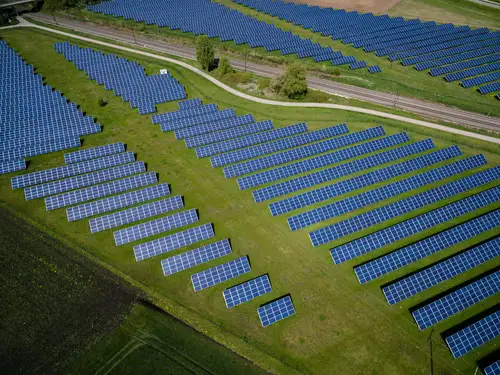Solar demand is blazing of late. According to Rob Barnett, senior clean energy analyst at Bloomberg, solar installations look to be heading for a global growth rate of 30% this year, and continuing with double digit growth after than until 2025, at least.
In an interview, Barnett said, “At the end of the day, the global solar picture is just staggering at this point. We are on track to install something like 250 gigawatts of solar capacity this year. I know most folks don’t think in gigawatts, but that is a very large amount. It’s more than the installed capacity of a number of European countries.”
China is the world leader in solar capacity, and reportedly will double their capacity by the end of the year.
As the energy crisis hits home, from rising coal prices to Russia’s reduction of gas flows, renewable energy is hitting record highs in other countries as well. Germany just broke its solar generation record July 17th during the heatwave that swept across Europe. In the US renewable energy generation hit an all time high of 28% there in April, thanks to its solar and wind infrastructure.
Barnett noted, this appears to be the beginning of a bigger upswing, “and so there really is this big, top-line growth scenario that we see unfolding for all of the companies that are participating in the solar supply chain.”
Investors have a number of options to get on the bandwagon, according to Barnett, who said, “You’ve got First Solar, Canadian Solar — these companies that make the modules that you see out on, perhaps, roofs or out in a field somewhere. And then you’ve got other supporting companies like SolarEdge or Enphase, which make the inverters that convert the DC electricity from solar into AC for the grid.”
Other options would be Daqo New Energy Corp, a China-based solar energy company which provides raw materials to solar panel makers, Canadian Solar Inc., a Canada-based solar product developer which designs and sells solar modules, inverters and kits for residential, commercial, and industrial customers. Or you can invest in Hannon Armstrong Sustainable Infrastructure Capital Inc which is a real estate investment trust (REIT) investing in sustainable infrastructure.
Barnett notes, while environmental concerns are often talked about, the sector has not been harmed by the rise in the cost of energy, or the disruptions caused to supply flows by the war in Ukraine and the geopolitical fallout from that.
He said, “I do think that there is increasing focus on all sorts of solutions to try to help manage emissions and tackle the concerns of climate change. But I would actually argue that the bigger driver for clean energy demand, particularly here in Europe, is elevated energy costs.”
And at the same time the cost of older energy solutions has risen, the price of solar has been falling. Improved efficiency of the designs, combined with improvements in manufacturing techniques have caused the prices of solar modules to plummet of late. A unit which cost $4.88 per watt in the year 2000 had seen the cost per watt drop to just $0.38 per watt by the year 2019.
The International Renewable Energy Agency (IRENA) issued a report showing that by 2021, renewable energy had become the cheapest source of power due to the technological advances improving efficiency. IRENA said its research also showed that at that point two thirds of renewable energy projects had become cheaper than bringing a new coal plant online. These advances point to solar’s momentum only increasing, regardless of what older traditional energy does.
Barnett noted, “It’s certainly possible that if you had some easing in the traditional fuel markets, that it might take the accelerator off. But I don’t really see that as being a material risk on the demand side of the equation for clean energy.”
Barnett did note the concerns many have about renewable energy’s intermittency issue, where solar only generates at capacity when the sun is out, and wind power requires the wind be blowing. However, he said, “I do think that the economics are already quite good. And so you’d have to see such a sea change in terms of gas prices or coal prices, if you’re thinking about the power grid, to really reverse some of the trends. And I just don’t think there’s any appetite for it either.”


